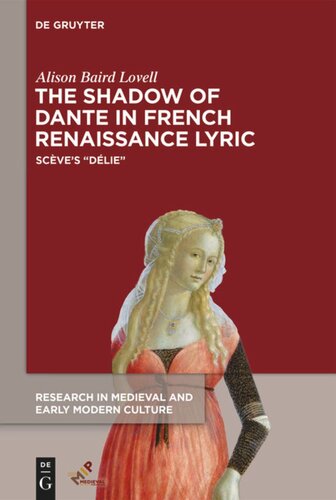

Most ebook files are in PDF format, so you can easily read them using various software such as Foxit Reader or directly on the Google Chrome browser.
Some ebook files are released by publishers in other formats such as .awz, .mobi, .epub, .fb2, etc. You may need to install specific software to read these formats on mobile/PC, such as Calibre.
Please read the tutorial at this link: https://ebookbell.com/faq
We offer FREE conversion to the popular formats you request; however, this may take some time. Therefore, right after payment, please email us, and we will try to provide the service as quickly as possible.
For some exceptional file formats or broken links (if any), please refrain from opening any disputes. Instead, email us first, and we will try to assist within a maximum of 6 hours.
EbookBell Team

4.8
54 reviewsThis book presents an interpretation of Maurice Scève’s lyric sequence Délie, object de plus haulte vertu (Lyon, 1544) in literary relation to the Vita nuova, Commedia, and other works of Dante Alighieri. Dante’s subtle influence on Scève is elucidated in depth for the first time, augmenting the allusions in Délie to the Canzoniere of Petrarch (Francesco Petrarca). Scève’s sequence of dense, epigrammatic dizains is considered to be an early example, prior to the Pléiade poets, of French Renaissance imitation of Petrarch’s vernacular poetry, in a time when imitatio was an established literary practice, signifying the poet’s participation in a tradition. While the Canzoniere is an important source for Scève’s Délie, both works are part of a poetic lineage that includes Occitan troubadours, Guinizzelli, Cavalcanti, and Dante. The book situates Dante as a relevant predecessor and source for Scève, and examines anew the Petrarchan label for Délie. Compelling poetic affinities emerge between Dante and Scève that do not correlate with Petrarch.